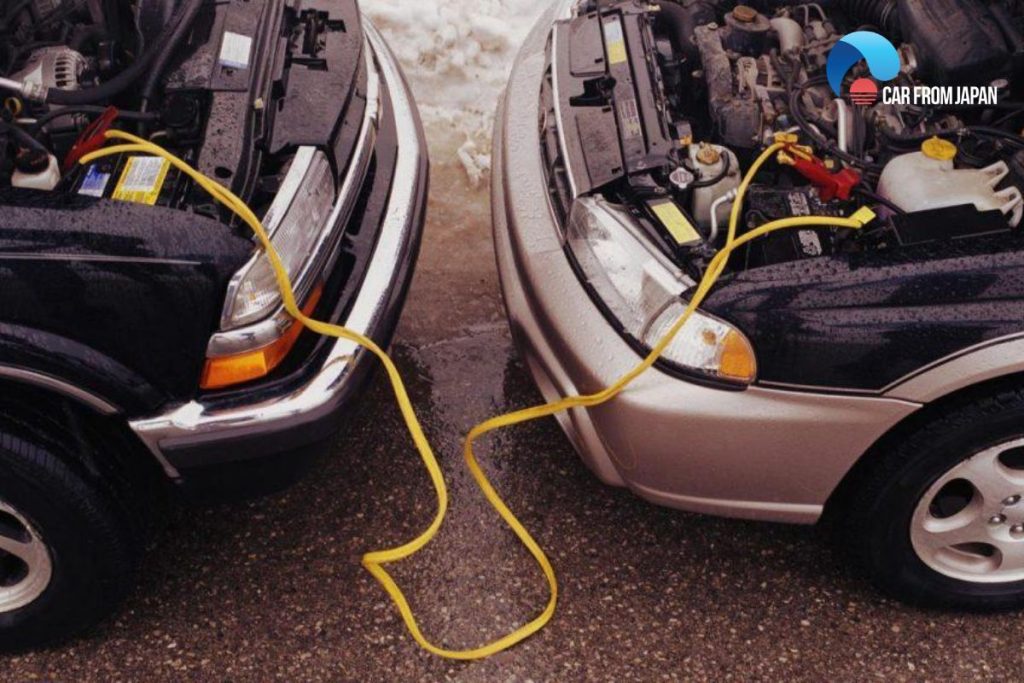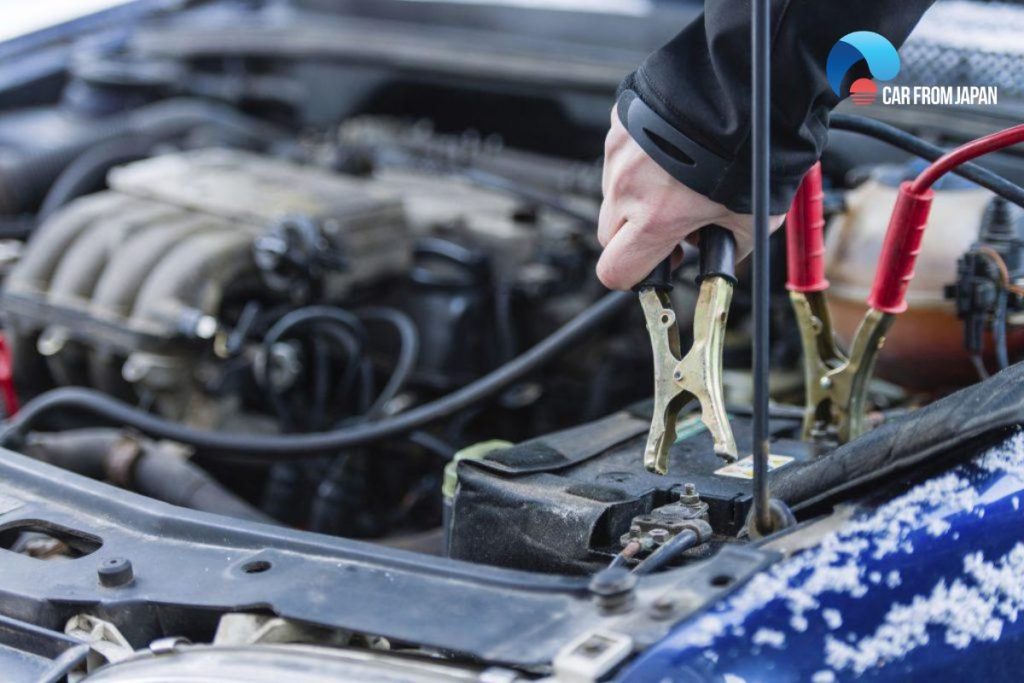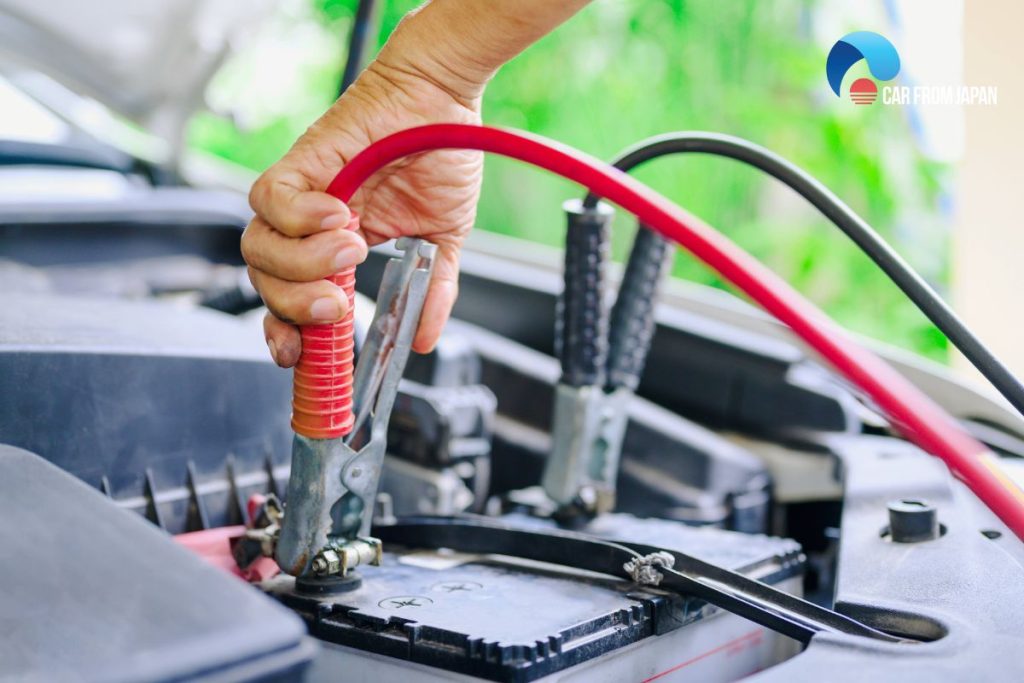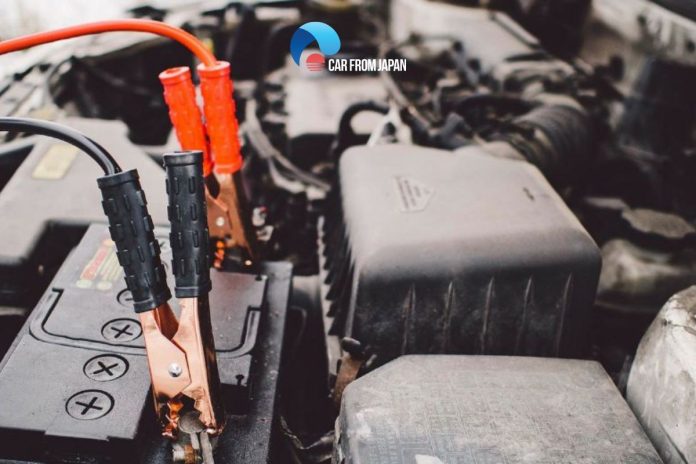Jumpstarting a car is quite easy but there can be certain issues such as sparking that arise. Sparking while jump starting a car is always a fishy situation.
Whether it’s the jumper cables sparking or anything else, the reason behind the spark and its consequences are important to be known before it’s too late.
So, let’s explore whether the spark is safe or not!
Contents
Is Sparking While Jump Starting A Car Safe?
Sparking while jump-starting a car is normal and expected, but it’s not inherently safe!
There could be numerous reasons behind the spark when you are trying to jump-start your car.
You have to be very careful when connecting the terminals of the battery with the cables. And, facing such a situation while doing this can result in some hazardous circumstances.
Sparking- usual or strange?
When you are standing in front of the car battery by holding those cables, even a little spark can result in bigger danger. The sparks when jumpstarting a car is worse than anything else you would want to see.
Follow every step of the jump-starting the car method and try not to leave any loophole in between the steps. The sudden spark might astound you and the chances of you to knock your head on the hood are higher.
In addition, emitting hydrogen is the natural phenomenon of the battery. A little spark can result in a blast that can explode the acid on everything, including you.

Additionally, the spark at the joints is a consignment of dead battery that exceeds approximately 10A, which is dangerous for volt barbs.
If the spark is on the detachments, the situation could be worse than you think. The inductance may have crumpled when the power supply is turned off and can generate a hundred-volt spark.
In any phase, you get the spark while pursuing the jump-start, carefully clasp up the red jumper cable to the positive terminal of the fine battery and the other to the positive terminal of the bad battery.
Now, clasp the black cable to the negative terminal of the good battery and the other cable to the ground point of the bad battery.
The right way
If it’s still sparking, let it. Some car models have this feature where the ground point in the battery is meant for sparking. It’s not dangerous at all.
Whether you are doing the jump-start for the first time or numerous times, the right method must be followed in every possible way.
In case you are not sure about the procedure, contact the experts right away. They will handle the situation and you will discover a few maintenance tips as well.

Following the steps below to learn about this process:
Use the appropriate cable
Using heavy-duty and high-quality jumper cables specifically designed for jump-starting vehicles. Cables must be adequately insulated and in good condition.
Turned off your vehicles
Turn off both vehicles before connecting the jumper cables, including all electrical parts such as radio or headlights which prevents power surges and limits the risk of sparking.
Connect the cable
Connect the positive (+) and negative (-) terminals of the jumper cable to the order of terminals of the dead battery and good battery. It is important to connect them in the correct order and ensure a secure connection.
Keep the cables away from moving parts
Make sure the jumper cables are clear of any moving parts, such as the engine fans or belts. Ensure they are positioned away from hot surfaces or areas that may cause damage or create a safety hazard.
Maintain a safe distance
Once the cables are connected, stand clear of the engine compartments and keep bystanders at a safe distance. If a spark occurs, it is best to be away from the immediate area to avoid any potential injury.
Start the donor vehicle
Start the engine of the donor vehicle (the one with the good battery) and let it run for a few minutes. This will help charge the dead battery.
Start the disabled vehicle
Attempt to start the disabled vehicle. If it starts successfully, leave it running for a while to allow the alternator to recharge the battery.
Disconnect the cables
Once the disabled vehicle is running, carefully disconnect the jumper cables in the reverse order of connection (negative first, then positive). Avoid letting the cable clamps touch each other or any metal surfaces.
Remember, if you are unsure about jump-starting a car or if there are any safety concerns, it is always best to seek assistance from a professional or a roadside assistance service.
Why There Are Sparks While Jump Starting Car?
Car sparks in this form can appear due to the following situations. Beware!

Completing the circuit
Sparks during jump-starting primarily occur because you’re creating a sudden, high-current electrical connection.
Think of it like flipping a light switch – you’re completing a circuit. When you connect the final jump-start clamp, you’re bridging the gap between a charged battery and a discharged one, then electricity may flow rapidly.
This sudden surge of current can manifest as a spark at the point of connection. The spark is like a tiny lightning bolt; you’re seeing the energy move between the batteries.
Differences in voltage
While completing the circuit is the primary cause of sparks, the difference in voltage between the two batteries also plays a role.
Even a slight difference in voltage potential between the good battery and the dead battery can contribute to the intensity of the spark.
This is because the larger the voltage difference, the greater the electrical pressure pushing the current across the connection, resulting in a potentially larger spark.
However, it’s important to note that even with minimal voltage difference, a spark is still likely due to the sudden completion of the circuit and the inherent resistance in the cables and connections.
Read More: Can A Car With Dead Battery Be Started Without Using Jumper Cable?
What Are Other Common Jump-Starting Issue You Should Opt For?
No sparking at all
If you don’t see any sparks when connecting the final jump-start clamp, it suggests that electricity isn’t flowing between the batteries.
This could mean the “good” battery is actually discharged, the terminals on either battery are heavily corroded, preventing a good connection, or the jumper cables themselves are faulty.
Check the “good” car’s headlights – if they are dim or don’t turn on, its battery is likely the problem.
Clean any corrosion from the battery terminals and ensure the clamps are making solid contact. If the problem persists, try a different set of jumper cables.
Excessive sparking
While some sparking is normal, an intensely bright spark or sustained sparking indicates a problem.
This often signifies a short circuit somewhere in the system, possibly caused by damaged wiring or a faulty component.
It could also be a sign of a more serious electrical issue. If you encounter excessive sparking, stop the jump-start process immediately and investigate the cause before proceeding.
Car still won’t start after jump
If the car doesn’t start even after a successful jump-start (meaning you saw some sparking and the connection was maintained for a reasonable time), the issue is likely beyond a simply discharged battery.
The problem might be a faulty alternator, which is responsible for recharging the battery while the engine is running, or a failing starter motor, which initiates the engine’s combustion process.
Watch this video from Turfside Assistance to learn more about battery terminal sparks when jump starting!
The Verdict
The battery becomes inefficient with time. So replace the old battery with the new one until you face the sparking while jump starting a car situation all over again.
Be careful and stay safe with the guidelines!



